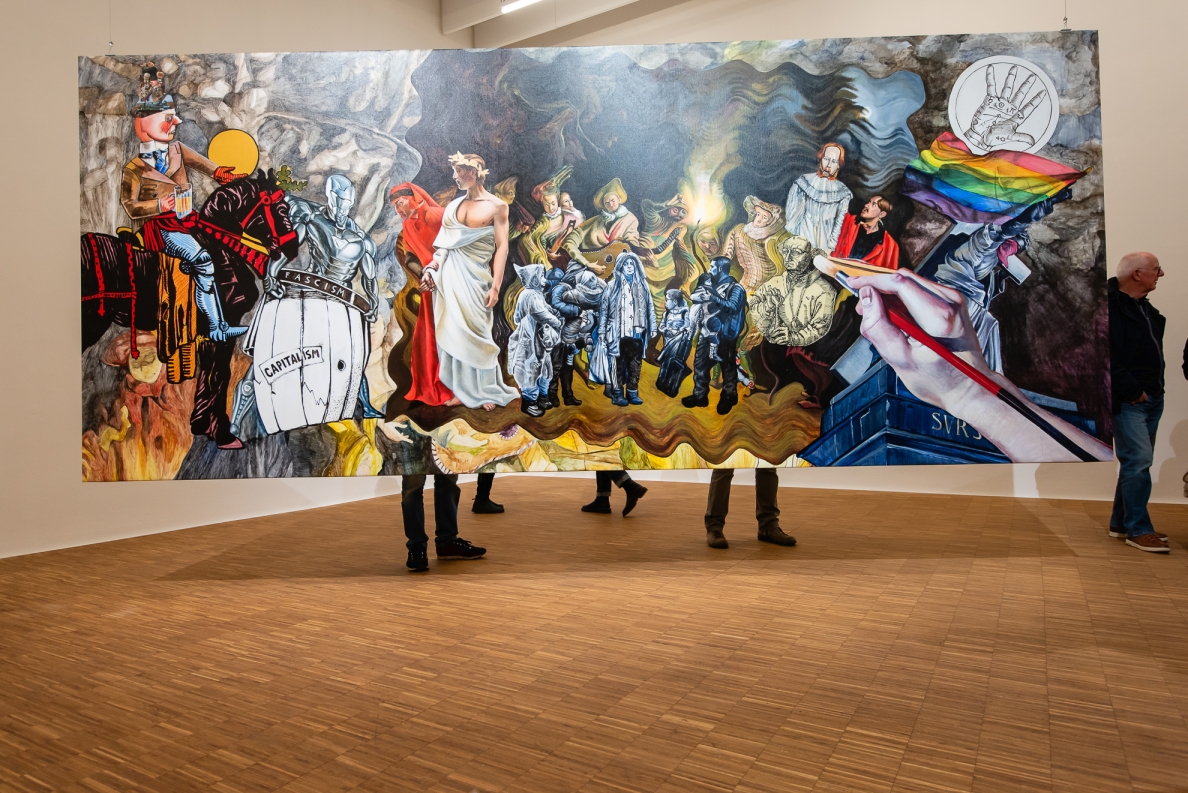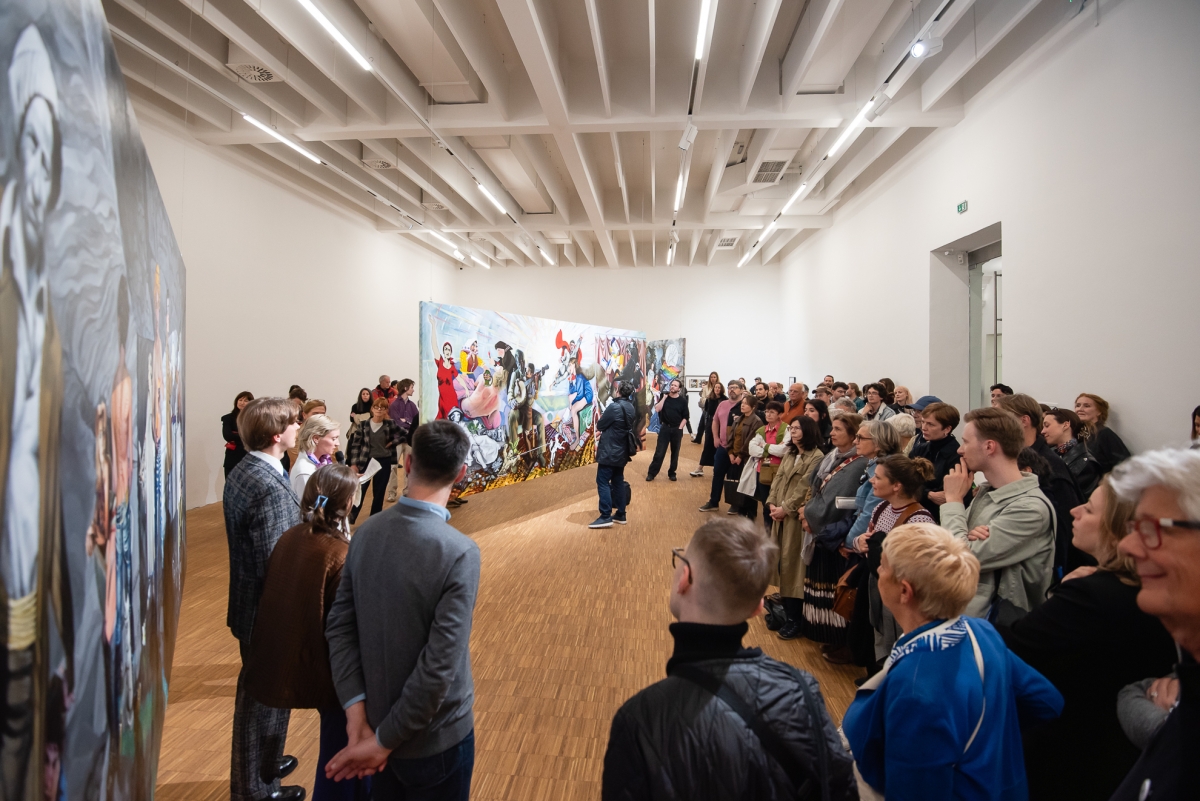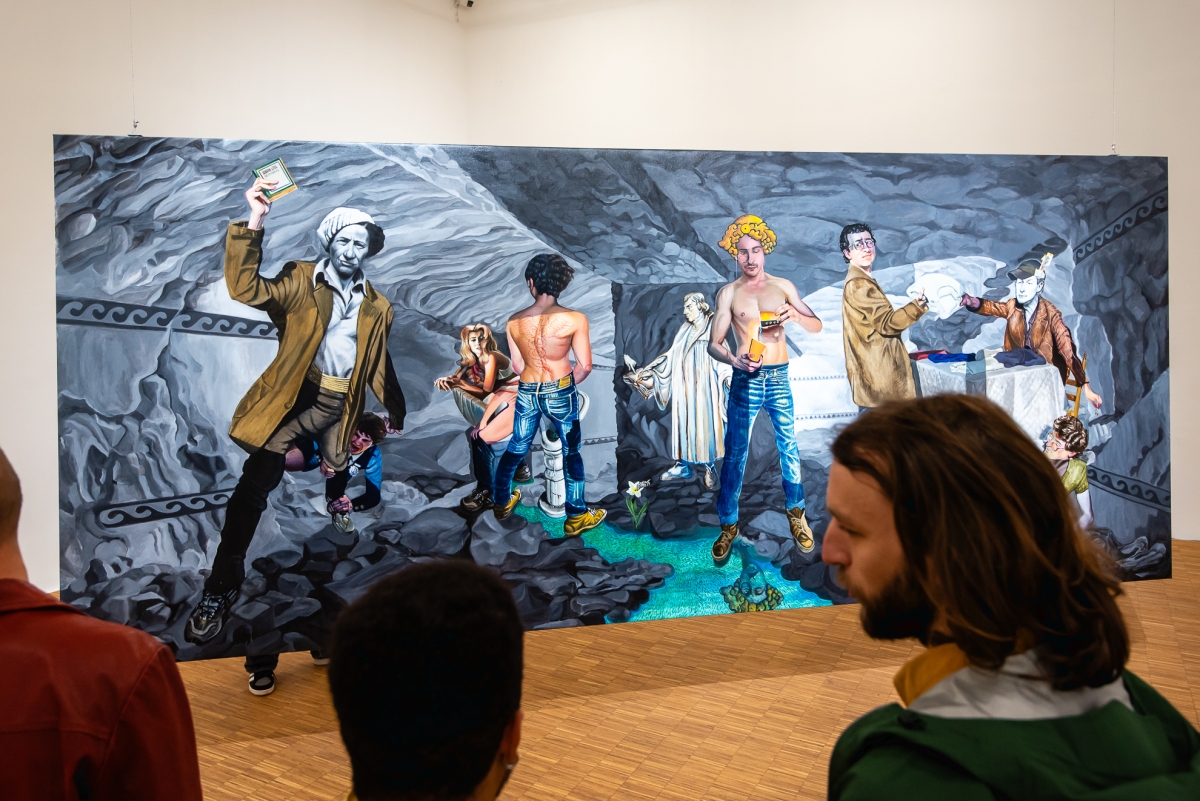
From 17 May 2025, visitors to the Kunstverein in Salzburg will have the opportunity to view Mikołaj Sobczak’s works in the exhibition entitled “Moon, Sun, Mercury”. In three monumental paintings and subtle visual annotations, the Poznań-born artist constructs a portrait of power and its collapse, reconstructing a fragmented history of resistance, propaganda, and survival. The exhibition runs until 13 July 2025. The Adam Mickiewicz Institute is a partner of the exhibition.
Mikołaj Sobczak’s Exhibition in Austria
Mikołaj Sobczak’s exhibition “Moon, Sun, Mercury” pieces together a fragmented history of resistance, propaganda, and survival. In three monumental paintings and subtle visual annotations, the artist draws on communist posters, esoteric traditions, queer archives, and contemporary critiques of technofeudalism to create a portrait of power and its breakdown. The exhibition does not recreate grand historical narratives or mythological timelines. Instead, it sets the stage for a choreography of characters: queer activists, exiles, revolutionaries, and outcasts. Their intertwined fates reveal cracks in history and the unfinished struggle for resistance.
Curated by Mirela Baciak, director of Salzburger Kunstverein, the exhibition presents the work of Mikołaj Sobczak, a Poznań-born artist who works between Warsaw and Düsseldorf. Queer activists take centre stage in his surreal, collage-like narratives. He specialises in painting and video art, complemented by performative elements. The opening of “Moon, Sun, Mercury” was accompanied by Sobczak’s performance “Anti-Fascist Art Manifesto”, shown as part of “wild thinX: nonconformist practices in architecture, design, and art”.

Mikołaj Sobczak's “Moon, Sun, Mercury” exhibition. Vernisage. Photographer: Bryan Reinhart
“Sun”, “Moon”, and “Mercury” – Three Large-Format Works by Sobczak
At the centre of the Austrian exhibition is “Sun”, a work exploring the aesthetic and political dimensions of magical realism as a means of survival in the face of violence and systemic erasure. Its narrative is populated by a vivid cast of characters: a revolutionary figure echoing communist propaganda, striking a pose reminiscent of the Tarot’s Magician; Goethe, offering a counterpoint to reactionary romanticism; and poisonous plants historically used in uprisings against feudal oppression.
While Sun paints a landscape of resistance, “Moon” immerses the viewer in a space of disorientation. This is achieved through the juxtaposition of capitalist iconography, fascist grotesquery, and the imagery of contemporary humanitarian crisis. The “Knight of Capitalism” – a character inspired by Luc Boltanski and Ève Chiapello’s analysis of shifting capitalist justifications – is transformed into a monstrous hybrid of George Grosz’s fascist caricatures and present-day techno-feudal motifs. The Iron Man figure encloses a cracked barrel marked “capitalism”, encircled by a fascist-style ring, visually portraying the shift from deregulated capitalism to authoritarian constraint, as theorised by thinkers such as Przemysław Wielgosz.
“Mercury”, in turn, shifts the focus to mechanisms of thought: the cognitive maps through which power sustains itself and the fractures where alternative knowledge endures. At its centre is Eve Adams – a Polish-Jewish immigrant whose pioneering lesbian writing led to her deportation from the United States and eventual death in Auschwitz. Margaret Leonard, the undercover agent who ensnared Adams, appears as an active participant in the process of criminalisation and erasure. They are joined by Catherine Deneuve in her Belle de Jour role, embodying the fascist dichotomy of femininity split between sacred motherhood and demonised sexuality. Another figure is Stanisław Chmielewski – “Good Stasio” – whose nickname evokes not only personal warmth but also the quiet heroism of the network of gay men who forged documents and led Jews out of the Warsaw Ghetto. Narcissism, intensified by the economy of social media, becomes a terrain where surveillance and self-expression intertwine.

Mikołaj Sobczak's “Moon, Sun, Mercury” exhibition. Photographer: Bryan Reinhart
Alternative Narratives, Queer and Antifascist Aesthetics in Art
Mikołaj Sobczak’s artistic strategy involves confronting disparate images, disrupting symbols, and weaving narratives into dense constellations. Painting becomes both a tool and a weapon – exposing how history is written, distorted, and occasionally reclaimed. The artist does not claim objectivity in relation to these stories – he is deeply entangled in them, caught between the forces he seeks to expose and those from which he cannot entirely disentangle himself.
The exhibition “Moon, Sun, Mercury” is a practice in constructing counter-history. It also represents an attempt to forge an antifascist aesthetic for the present – one in which the struggle over images, narratives, and bodies is ongoing and far from resolved.
The exhibition was commissioned and produced in collaboration with the Salzburger Kunstverein and co-financed by the Ministry of Culture and National Heritage.

